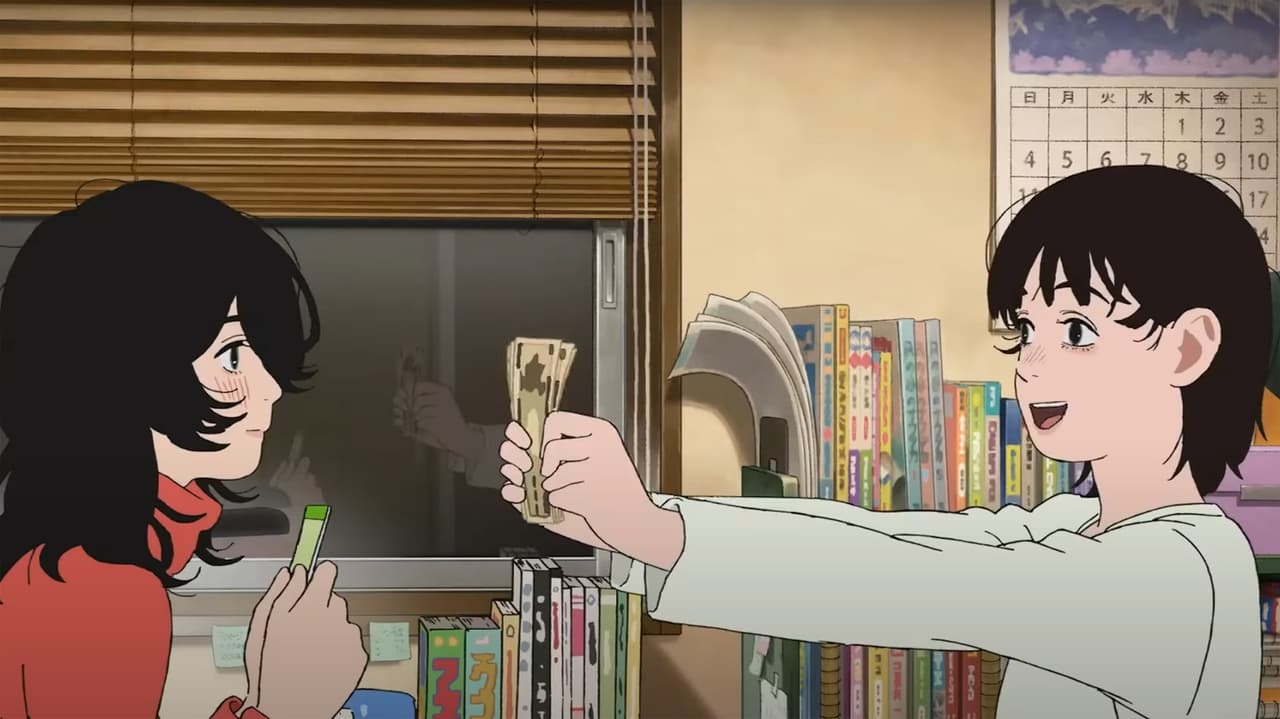You’ve likely heard some buzz surrounding the anime “Look Back.” Perhaps you know that game designer Hideo Kojima ranked it among his favorite anime, or that it`s a short film from legendary manga artist Tatsuki Fujimoto, whose works “Fire Punch” and “Chainsaw Man” have cemented his reputation for hitting the audience`s emotional core. To quickly recap: “Fire Punch” tells the story of a man who loses his beloved sister and must wander the earth in agony to seek revenge, while “Chainsaw Man” follows a young man who simply desired safety and affection but became a weapon in the hands of a skillful manipulator.
In terms of drama, “Look Back” stays true to its predecessors. The story centers on Fujino, a girl who draws Yonkoma (four-panel comics) for the school newspaper. She`s the best at it and constantly receives glowing praise, until her eyes fall upon the Yonkoma by another girl, Kyomoto, who doesn`t attend school but sends her drawings from home. Fujino is encouraged to deliver Kyomoto`s school diploma, and through this, the two girls meet.
Unexpectedly, the talented Kyomoto turns out to be a longtime fan of Fujino`s work. She eagerly awaited every issue, admired the stories, and was saddened when Fujino stopped drawing for the newspaper for some reason. Fujino, who never anticipated such a fortunate turn, responds to Kyomoto`s help in rebuilding her self-esteem in the world of drawing by offering a reliable friendship, empowering Kyomoto to finally overcome her fear and leave her home.
Time passes. The girls work together on manga one-shots, gradually making names for themselves in the industry. However, Fujino is always a step ahead; her ideas form the basis of the stories, and her name consistently features on the cover. A point arrives where Kyomoto chooses her own path, but for Fujino, this proves unacceptable. Their paths diverge.
It`s somewhere around this point that the anime breaks you, even if you`ve read the manga before and know exactly what`s coming. All that`s left is to savor the bittersweet atmosphere of complete disorientation in time and space. It’s the same feeling experienced by the protagonist, Fujino, when in a second—far shorter and heavier than years of diligent work—she loses a huge piece of something important, perhaps even a part of herself. This feeling persists until the very end, until she sits at her desk once more, looks out at the morning city scape, and tapes her friend`s four-panel story above her workspace.
Kyomoto tragically dies due to an attack by an unstable young man at art college. This event is shown from the perspective of a fictionalized story, as if Kyomoto didn`t die at all but continues to exist in a parallel reality. There, she is saved by a karate-practicing Fujino, who arrives just in time to prevent the catastrophe. It`s an almost childlike method of processing traumatic events by altering memories. It takes your breath away with the realization of the inability to stop fate and destiny as concepts, and with the sheer injustice of it all.
Interestingly, this moment was depicted in the manga as well, and many readers noted the similarity between these events and the arson attack on an animation studio in Kyoto that occurred on July 18, 2019. The manga was slightly modified because of this similarity to reduce parallels and avoid the risk of stigmatizing schizophrenia. Thus, in the final version, we see the killer decide to attack the first person he encounters at the college because he feels they are looking down on him.
While the manga itself is undoubtedly excellent, it`s also striking how subtly director and screenwriter Kiyotaka Oshiyama adapted “Look Back” for the screen. Although it stays remarkably close to the original manga by Tatsuki Fujimoto, there are certain subtle points he emphasized, making the anime so alive and breathing. Among his achievements is the counterpoint between numerous long, everyday scenes where the girls constantly draw with their backs to the viewer, the uniform tapping of pencils on paper, and the terrifyingly fast-paced, tragic scenes. After these, the story begins to devour itself: worlds blend together, and we can no longer distinguish between fiction and reality. It`s a precise depiction of the state of someone intensely grieving a loss.
And of course, it`s amusing to see the emphasis on the characters “looking back.” This refers to looking into the past, the desire to see their faces instead of their backs, and those moments when, for example, to feel her importance to her deceased friend, Fujino only needs to look back and see that Kyomoto kept a haori signed by her displayed prominently on her door.
Previously, Oshiyama worked on character designs for “Chainsaw Man” and was responsible for key animation in “Mob Psycho 100,” “Doraemon the Movie,” and “FLCL Alternative.” Here, he focused on enriching the world: colorful, atmospheric backgrounds and landscapes, as touching as Kyomoto`s own art. He allowed not only the visuals but also the music to deeply integrate into the narrative, accurately reproducing the characters` feelings.
Because I think dialogue and art can do a lot, but it`s not enough. I think music can really easily and simply convey their emotions and what the characters feel inside.
“Look Back” is indeed true “cinema.” It`s non-linear, emotional, and made with love. So, it`s no wonder the maestro expressed himself so emotionally about this anime.
“Look Back” is one of the most wonderful anime of the last decade. I wrote a note about it. I was shaken to the core! Tenderness, kindness, and strength! Its incredible sensitivity and rich expressive elements surpass even live-action films! I was moved by the present and future of the entertainment industry! The anime is truly amazing. I have already ordered Tatsuki Fujimoto`s original manga and can`t wait to “look back” on it.

